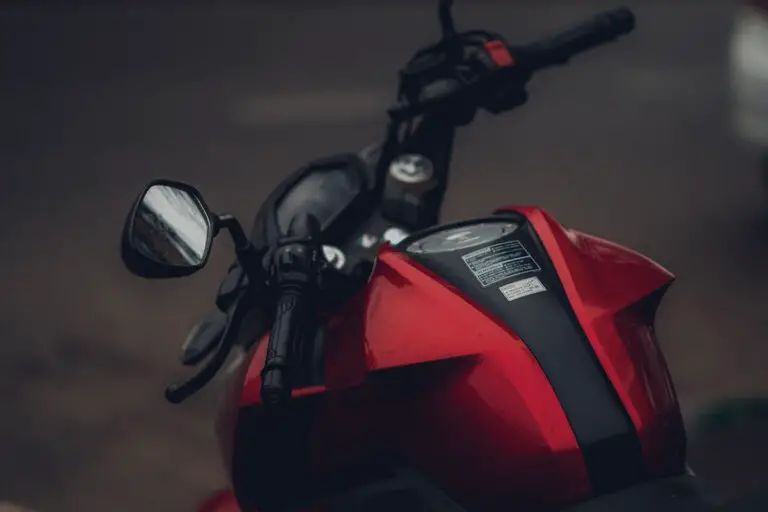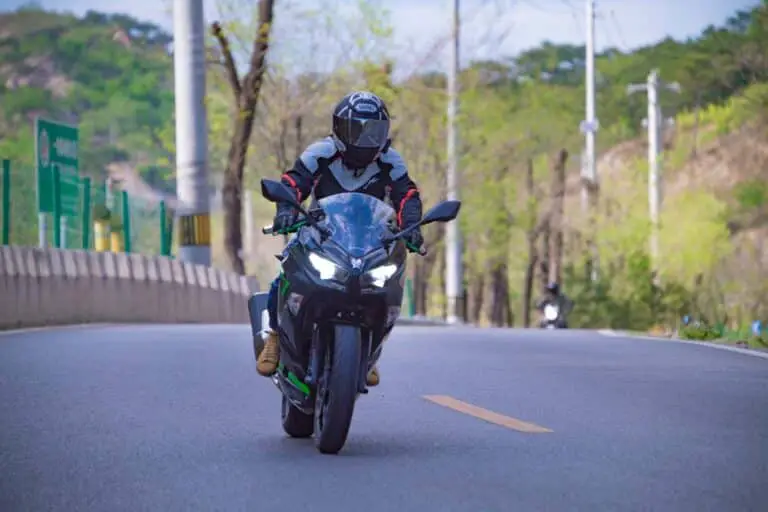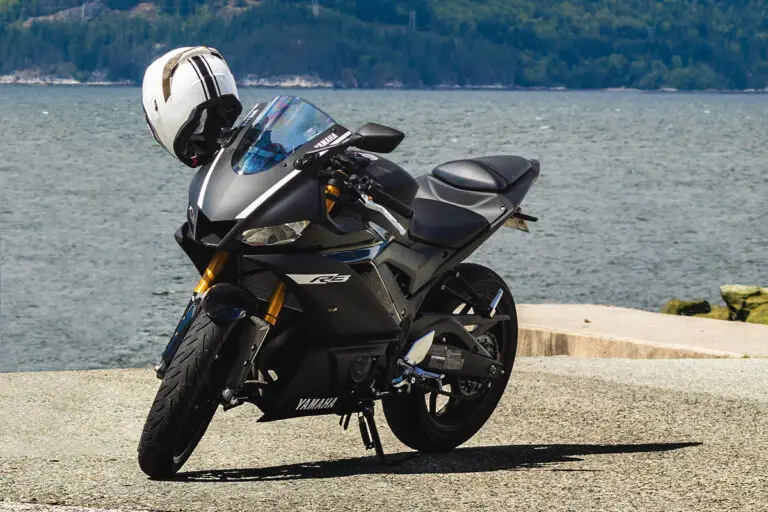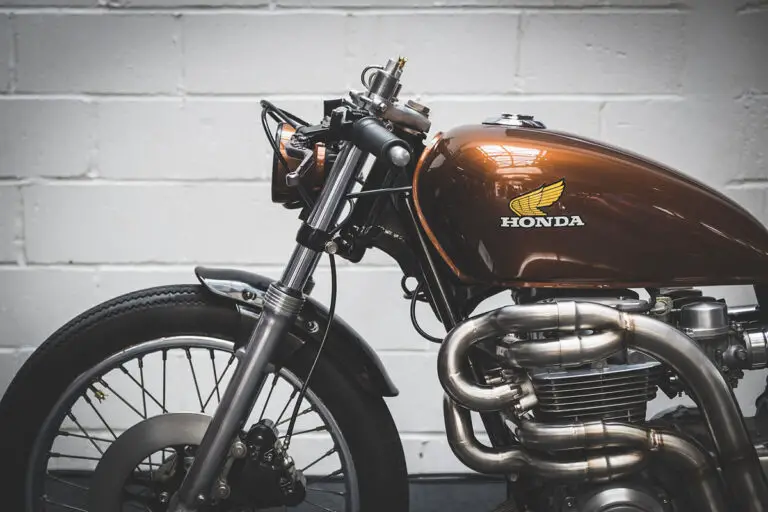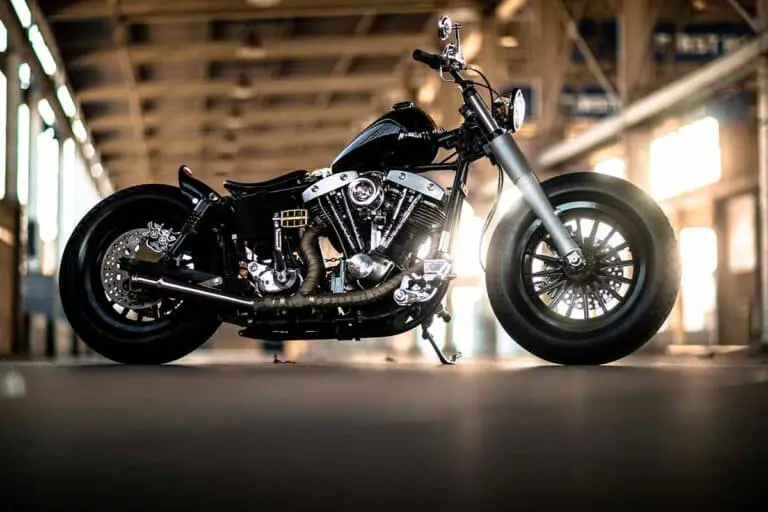What Is ABS on a Motorcycle? (How It Works)
Disclosure: We may get commissions for purchases made through links in this post.
With consumer demands becoming more stringent, motorcycle OEMs are constantly pushed to improve their mass-produced bikes while outdoing the competition. And collectively, their approach is to fit their motorcycles with the latest tech and a slew of user-friendly, ride-enhancing features. The ABS (Anti-lock Braking System) is one such feature, which we will discuss further in this article.
So, what is ABS on a motorcycle, and how does it work? ABS is a safety feature in most motorcycles with a displacement of at least 150cc. It reduces emergency and corner braking risks by calculating wheel speed and regulating braking pressure with the help of an ABS modulator, controller module, and speed sensors.
We will not only cover what a motorcycle ABS is but also compare it against relevant braking systems. Also, we will touch on different ABS types, their lowdowns, and how the feature works.
It is alright if you do not have an urgent need for the information I am about to share. But if you are a prospective buyer or contemplating an upgrade to an ABS motorcycle, this guide is for you!
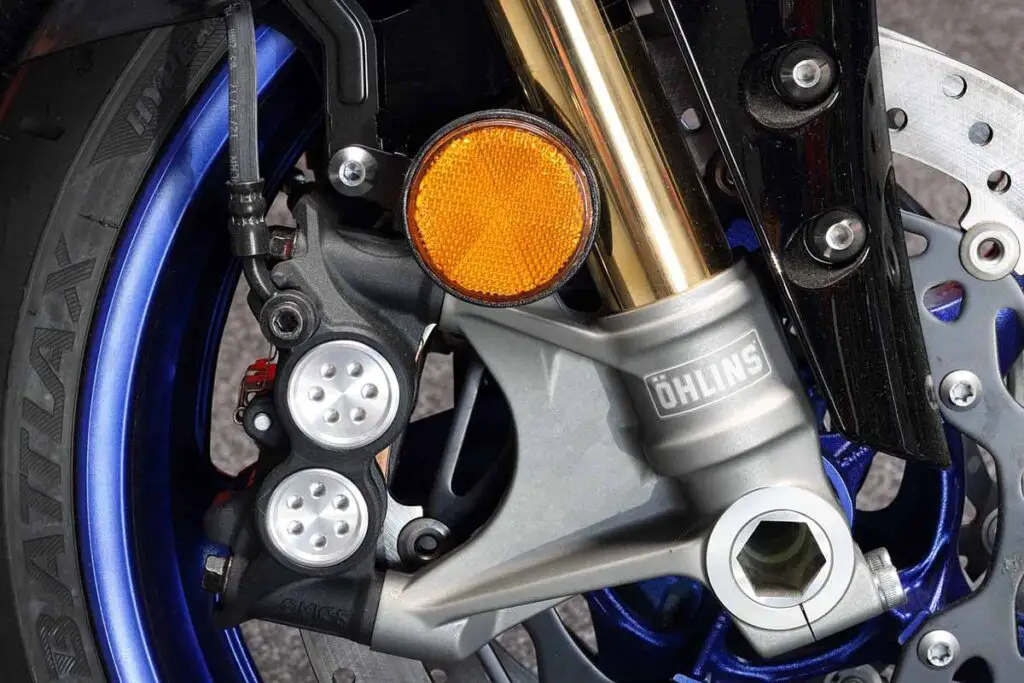
What Is ABS on a Motorcycle?
ABS or Anti-lock Braking System is a safety feature consisting of speed sensors, valves, a pump, and an ABS controller (view on Amazon) that prevents wheels from locking up during braking (hence, the name). It is not exclusive to motorcycles and is shared with aircraft and four-wheelers.
The technology has been around for a century, from its inception, and for nearly 25 years (if only accounting for its history with motorcycles).
This precautionary measure was born in aviation in the 1920s before it became a feature in automobiles. And we have two geniuses to thank for it — French pioneer Gabriel Voisin (who experimented with systems dealing with hydraulic braking pressure) and German engineer Karl Wässel (who officially patented the ‘non-skid braking’ concept in 1928).
Voisin’s objective was to reduce tire slippage in aircraft, as the latter’s original brake design had the drums and flywheel spinning at different rates. And as fate would have it, the success of his experiments resulted in so much more — including a notable 30% improvement in braking performance and the eradication of tire blowout.
Eventually, Voisin’s brainchild got the attention of automobile engineers — leading to the application of his idea on four-wheelers.
Many polymaths have caught on to the ‘non-skid braking’ and patented an improved version of the same several years after. But despite this breakthrough crossing over to automobiles, aircraft remained the predominant beneficiary of the braking system during the early ’50s.
The Dunlop Maxaret Anti-Skid System — an adaptation of Voisin’s work widely used in the Avro Vulcan, de Havilland Comet 2c, and the British Aerospace ATP (to name a few) — proves this point.
It was not until 1971 that Mario Palazzetti came up with the modern ABS (currently used in cars) and patented it as Antiskid before selling it to Bosch. Bosch, in turn, did not come up with a motorcycle-specific version until much later.
By 1988, BMW had ABS as an optional feature on its K100 series. Honda followed suit four years after launching some of the first electro-hydraulic ABS units on its Pan-European series (a.k.a. ST1100).
Different Types of Motorcycle ABS
There are five ABS types used by vehicles at present, namely:
- Four-channel, four-sensor ABS
- Three-channel, four-sensor ABS
- Three-channel, three-sensor ABS
- Two-channel, four-sensor ABS
- One-channel, one-sensor ABS
These schemes vary in the number of channels and speed sensors (view on Amazon). The first four types employ 3—4 speed sensors (typically one for each wheel) and 2—4 channels or valves controlling the wheels in pairs or individually.
Meanwhile, the last type has the channel and speed sensors located at the rear axle and is a typical ABS setup for trucks and SUVs.
Unlike four-wheelers, motorcycles only have two ABS types — AABS and eABS. AABS (Analog Anti-lock Braking System) uses passive sensors, while eABS (Regenerative Anti-Lock Braking for Electric 2-wheel Vehicles) uses active/digital sensors.
These schemes can have one of three configurations — conventional (lone ABS), enhanced (partial or fully-integrated system), or combined (ABS that works in conjunction with single/dual CBS or Combined Braking System).
These arrangements may or may not have Cornering ABS or IMU (Internal Measurement Unit, Lean Angle-Aware Braking).
ABS vs. CBS (Combined Braking System)
Both ABS and CBS make for effective braking. However, these braking systems excel over the other in certain aspects. When it comes to skid and wheel lock-up prevention, ABS plays a bigger role.
But in situations where you need both wheels to brake simultaneously, CBS is king. The latter is also more affordable — hence, its widespread use in scooters and entry-level motorbikes.
CBS comes in either a single or dual layout. The difference is that a single (rear) CBS employs only one delay valve. Meanwhile, a dual CBS would have levers that activate both front and rear brakes through an interconnected system of delay valves, master cylinders, and secondary pistons.
Despite its ability to hasten deceleration and reduce suspension pitch, CBS on its own is not better than ABS for the following reasons:
- It is more likely to cause a fall-down — especially in cases where there is a sudden change to surface friction during brake pressure distribution from the rear to the front wheel.
- It tends to hamper advanced riders’ on-road instincts when dealing with precarious situations.
- It is not suitable for off-roading and stunt motorsports.
- It is not selectable/switchable since it is a mechanical feature.
Because of these inherent drawbacks, CBS is usually paired with ABS to make for a more formidable braking system. The merging of the two is realized via a couple of approaches — one with an active pressure buildup involved and another without.
Consequently, the combination has proven effective numerous times, especially in areas with changing seasons and a diverse range of terrain.
ABS vs. Cornering ABS
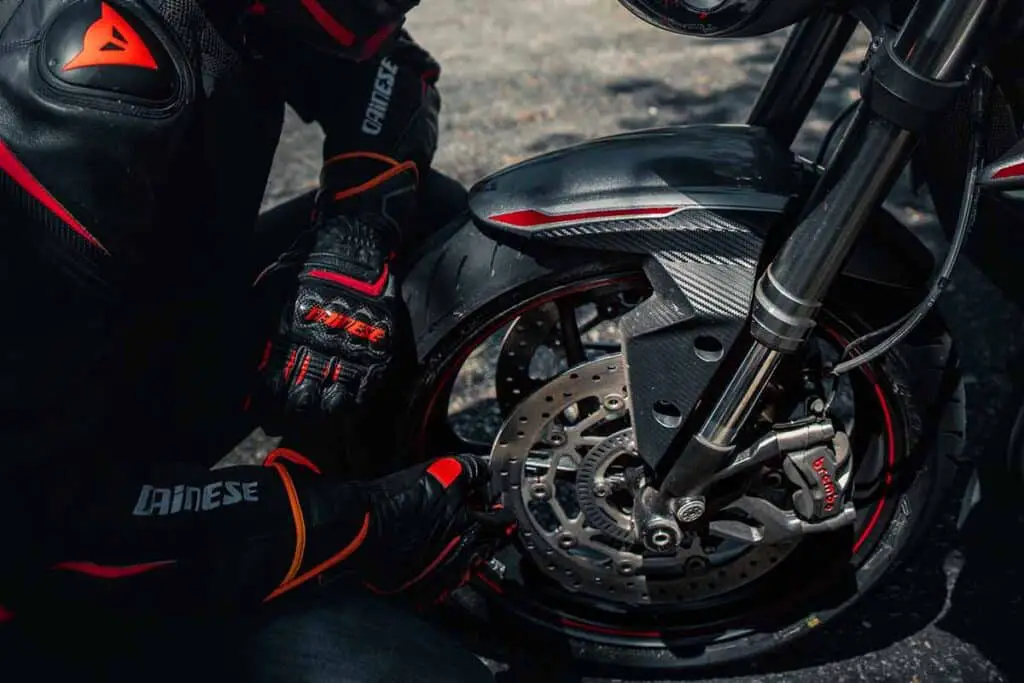
Functionally, cornering ABS (a.k.a. Lean Angle-Aware Braking, Internal Measurement Unit, or IMU) is like a standard ABS on cognitive enhancers.
It is no different from ABS in operability. However, it is a more intuitive system capable of recognizing when a two-wheeler is making a turn.
This ability allows the feature to regulate braking force in accordance with what the motorbike is doing while factoring in speed and lean angle (among others).
You may think this definition sounds similar to how ABS functions, but it doesn’t. ABS may yield effective braking, but it does so in a straight line.
Meanwhile, cornering ABS is more situationally aware — thanks to the slew of gyroscopes, accelerators, and sensors it works in conjunction with. Collectively, the system does more than sense brake slip — making it a staple for high-performance motorcycles.
How Does It Work?
We know that ABS prevents wheel lock-up and skidding during hard braking, ultimately aiding in motorcycle stability and safety. But because of the many variables in play leading to potential brake lock-up, you may wonder, “How exactly does ABS work?”
Generally, a motorcycle ABS begins to activate at speeds of at least 15—18 mph (25—30 km/h). But to truly understand the process, we should look at the individual roles of the different ABS components.
Speed Sensors
Wheel speed sensors consist of a coil “wound around a magnetic core and a permanent magnet” and a metallic ring gear (a.k.a. tone ring/wheel). They are affixed to the front and rear motorcycle wheels and designed to monitor the speed of the two-wheeler.
When the bike wheels rotate, their teeth generate a gyrofrequency that helps define wheel rotation speed.
Synchronous to this, the metallic tone ring generates electrical signals. The resulting signals are then sent to the motorcycle ABS unit for measurement and interpretation.
ABS Controller/Module/ECU
Once electrical signals are received, the ABS controller interprets up to 100 signals per second to make sense of the motorbike’s speed. Depending on the bike’s speed sensors (passive or active), wheel speed information down to 0 mph may or may not be read.
A non-lock-up scenario would yield a consistent, square wave output when using an oscilloscope like Siglent Technologies SDS1104X-E 100Mhz Digital Oscilloscope 4-Channel Standard Decoder (view on Amazon) to measure output signals from wheel sensors.
Naturally, a rider would have no way of doing this while on his bike, meaning the job is left to the ABS control module to perform. So if it determines a dramatic drop in signal pulses received, the unit interprets it as an impending wheel lock-up and employs the ABS modulator/actuator to adjust braking pressure on calipers and keep the motorcycle wheels spinning.
Hydro-Pneumatic Unit or Actuator/Modulator
The ABS modulator/actuator is where the magic happens. The hydraulic accumulator, electro-hydraulic pump, and solenoid-operated delay valves comprise this unit.
During possible wheel lock-up scenarios, the ABS module engages these components to control hydraulic pressure in the brake lines and keep the motorcycle from overturning or skidding.
Although all three components mentioned are crucial to the function of the ABS modulator (view on Amazon), delay valves play the most significant role. Otherwise known as proportioning valves, they control brake pressure and limit it to a certain amount based on the force applied to the brake pedal.
Depending on circumstances, the delay valves may be in one of three positions:
- Open: allows hydraulic pressure to flow through the brake
- Block: blocks extra pressure while maintaining limited pressure on the brakes
- Release: releases the pressure held on the brakes
The ABS pump or motor comes second and is responsible for restoring pressure to the hydraulic brakes after the valves have released it. It also changes its status to produce the required braking pressure to reduce sliding.
It does this by returning liquid from the hydraulic accumulator in the master cylinder while input and output valves operate during an emergency brake.
Last but not least is the hydraulic accumulator. Although its role is not as active as the other two, it is still vital to the proper function of the ABS actuator.
Depending on the need, it connects with the output valve to reduce hydraulic pressure in the brake chamber. Otherwise, it serves as a pressure storage reservoir.
Motorcycles with ABS — Pros and Cons
Pros
- It improves motorcycle stability, prevents skidding, and boosts rider confidence.
- Reduces stopping distance in some situations (for instance, wet pavement)
- Beginner-friendly and does not require additional training to ride an ABS-equipped bike
- It helps learners develop good braking techniques.
- Adds to the longevity of brake pads and rotors (view on Amazon)
- Increased tire efficiency by up to 30% (provided you have good tires to begin with)
- It can be used on conventional, enhanced, and combined braking systems.
- Negligible in non-slippery/emergency situations and does not take away from rider control.
- Modern ABS systems are now lightweight (tipping the scale at less than a kilogram) and should not be a huge detriment to the overall weight of your two-wheeler.
- It helps avert overturning and works well in panic-braking situations.
- It makes aggressive downshifts possible without locking the bike’s rear wheel.
- ABS on motorcycles help reduce the rate of fatal on-road collisions or crashes by at least 40%
- It can potentially lower the cost of your motorcycle insurance since some insurance companies know it is an integrated safety feature.
- Raises the market value of your motorcycle (in case you have plans of selling it in the future)
Cons
- Halting an ABS-equipped motorcycle may feel different, especially for riders who have gotten used to pumping their brakes to stop.
- Inconsistent stopping distances become a trade-off for sure-footed braking.
- Braking tends to happen more rapidly than normal when ABS is engaged.
- A sensitive or poorly calibrated ABS can work against you in high-grip situations.
- Non-switchable ABS does not allow riders to do drifts or stoppies on their two-wheeler.
- Pumping the brakes while ABS is engaged is ill-advised.
- ABS motorcycle laws correspond to requirements contingent on the size and specific bike categories. If you have a small-displacement thumper under 125cc, chances are you would not be able to add ABS to your motorcycle even if you wanted to.
- It does not work well on dirt roads, which is why dual-sport, off-road, and competition motorcycles do not have the feature.
- You may intervene too early or inadvertently cut in when you hit a bump while braking.
- A higher propensity for riders to rely heavily on the feature, becoming incapable of modulating the brake pressure
- Depending on your motorcycle and where you live, installing ABS on a non-ABS motorcycle can be costly.
- Installing ABS can clutter your two-wheeler’s sleek design.
How to Use ABS

ABS may be an added feature on your motorcycle, but it should not cause your braking techniques to be any different. When utilizing this braking system, apply your brakes as you would on a non-ABS two-wheeler.
Additionally, keep the below tips in mind (source: Motoress):
- Press the rear brake and pull in the front brake lever simultaneously, but take care not to do so abruptly. As soon as the brake pads are engaged, increase the braking pressure steadily and significantly.
- Remember to disengage your clutch during a full braking maneuver — when braking in bends or on a straightaway.
- Use the full contact patch of your tire when doing a full braking maneuver by setting your bike as straight as possible. This step will put your two-wheeler within the ABS control range and enable the feature to kick in faster. You would know ABS is engaged once you feel a gentle pulsation on your hand and foot brake levers accompanied by a ticking sound.
- Increase braking pressure gently and steadily during corner braking. This way, you prevent front wheel slippage.
- Pay mind to your rear wheel when doing a full braking maneuver. When you feel your rear end lift, reduce the braking pressure on the front wheel smoothly but swiftly. (The latest version of ABS units by Bosch may not necessitate it, but do it as a precautionary measure anyway.)
- Finally, make time to practice braking within the ABS control range on your rides. Doing so will enable you to use ABS to its full potential and make engaging ABS in emergency situations feel second nature. Experienced motorheads and aggro-riders can practice this on their own. But if you are a beginner or less experienced rider, have a qualified instructor supervise you.
ABS vs Non-ABS Motorcycles
Determining which is better between ABS and non-ABS motorcycles is largely preferential and purely skill-based.
ABS on motorcycles offer tons of benefits to the infrequent rider. However, these same benefits can prove counter-intuitive (if not detrimental) to the advanced motorist.
Also, we have yet to talk about the costs and required maintenance associated with each braking system setup.
As discussed in the section above, ABS does wonders for stopping distance, corner braking, safety, and motorcycle stability and control. It also makes getting acquainted with your bike’s mannerisms a smoother process.
However, the safety feature can also create misguided complacency in some riders. Not to mention that it does feel like going against the grain for veteran motorheads.
If your intended application is not too aggressive, having a non-ABS motorcycle is not that bad. If anything, it will help you develop better driver instincts, as you are compelled to work with your motorbike’s mechanical features and work around its performance limits.
On the other hand, no one can be too certain of their safety on-road. After all, a potential wheel lock-up could occur at any time due to the quality of tires, riding and road conditions, and braking versus traveling speed.
No matter how cautious riders are, they will eventually need to perform an emergency brake. In these unprecedented situations, ABS becomes significant.
Conclusion — What Is ABS on a Motorcycle?
In summary, a motorcycle ABS is a great safety feature, whether on a speed daredevil or a budget two-wheeler. However, it is unwise to use it as a crutch when driving. Remember that it is a backup feature whose purpose is to initiate the work for you when you find yourself in an unforeseen bind.
Despite its effectiveness, ABS on motorcycles do not make you or your ride impervious to brake slips, fall-downs, and accidents. It is still best to exercise caution and rely on driver instincts when taking your two-wheeler for a spin.
More than your ABS, paying mind to your surroundings, veering away from risky maneuvers, and keeping your motorcycle in check will guarantee you safety and fun.

